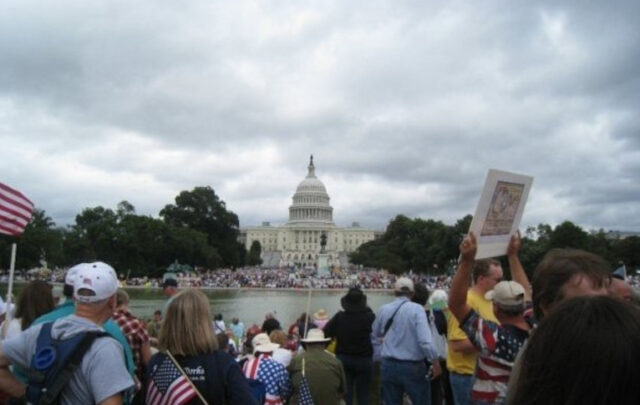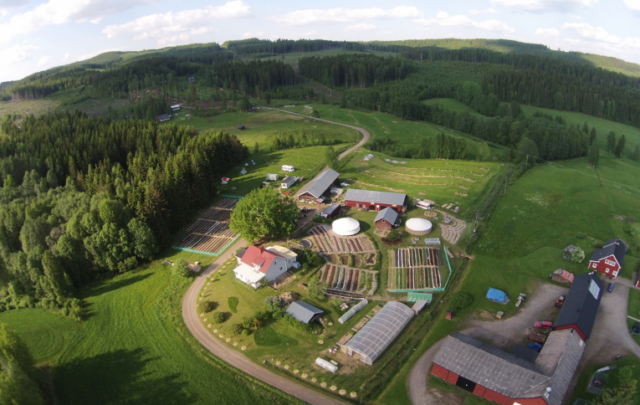In Scotland at least, rural areas are politically ‘soft’. It’s a critical mass thing – we simply don’t have enough bums on seats to bring in the big guns. Market-based approaches don’t give the necessary returns and publically-funded initiatives don’t justify a particularly high level of investment when you’re lucky to have a population density of a third of the national average.
 Don’t get me wrong, there are rural investments and there are rural initiatives, but they tend to be sectoral – you can run a project for older people or younger people or business people or just about any other ‘people’ you care to mention. But it’s a hard sell to persuade those holding the purse strings that rural areas deserve an integrated, holistic approach, an approach based on geographies rather than targeted bits of the population. This piecemeal approach to rural development gradually undermines the sustainability of rural geographies and chips away at our understanding of geographical identity and belonging. As a result of this, power and money and skills and resources have haemorrhaged away from rural communities over the decades, to be only partly replaced by the energies and aesthetic of a legion of culturally creative incomers.
Don’t get me wrong, there are rural investments and there are rural initiatives, but they tend to be sectoral – you can run a project for older people or younger people or business people or just about any other ‘people’ you care to mention. But it’s a hard sell to persuade those holding the purse strings that rural areas deserve an integrated, holistic approach, an approach based on geographies rather than targeted bits of the population. This piecemeal approach to rural development gradually undermines the sustainability of rural geographies and chips away at our understanding of geographical identity and belonging. As a result of this, power and money and skills and resources have haemorrhaged away from rural communities over the decades, to be only partly replaced by the energies and aesthetic of a legion of culturally creative incomers.
By contrast, investment and funding seemingly pours into urban communities, especially those in multiple deprivation, layer upon layer of initiative and innovation delivering ‘outputs’ and ‘outcomes’ and ‘metrics’ and endless reports and evaluations. Hopefully, along the way, a little seeps through to improve the lives of those people actually living in the communities, not just the project worker’s salary grade.
Does this sound like sour grapes? It isn’t, honest. Just an irritation that we continue to use an outdated ‘development through growth’ paradigm that sees urban and rural areas as separate and in competition with each other for resources and that each new batch of funding serves only to reinforce the separateness and the stereotypes each area holds for the other.
We do not truly see or know the other.
 And yet, the perfect storm – not just of Peak Oil and Climate Change, but also of ageing Western populations; of increasing world populations; of BRICs and the shift of economic and political power; of mountainous debt and pinched resources – affords a wonderful opportunity to restore and update a meaningful relationship between urban areas and their localities. A chance to see each other not as tired, old competitors, fighting over an ever diminishing resource base, but as co-conspirators, engaged as if our lives depended up it (because they do), in an adventure to create a positive and abundant mutual future.
And yet, the perfect storm – not just of Peak Oil and Climate Change, but also of ageing Western populations; of increasing world populations; of BRICs and the shift of economic and political power; of mountainous debt and pinched resources – affords a wonderful opportunity to restore and update a meaningful relationship between urban areas and their localities. A chance to see each other not as tired, old competitors, fighting over an ever diminishing resource base, but as co-conspirators, engaged as if our lives depended up it (because they do), in an adventure to create a positive and abundant mutual future.
I believe it starts by breaking through what we think we know about ‘urban’ and ‘rural’ and getting to really know and value and respect each other again – not through the intermediaries of the tabloid press or Government programmes or even the Twittersphere, but as real people connected to real geographies, with skills, passions, hopes, dreams – and a mortgage or rent cheque to service. I’ve lived both urban and rural lives and they are both challenging and inspiring in equal degree but nowhere near as different as one might expect.
There are huge opportunities now for cities to reconnect with their rural hinterlands and rebuild mutually supportive and relocalised relationships. These new relationships might be understood to be principally about food, but it is equally possible around any of the many aspects of natural and social capital. Crucially as well, the relationship benefits flow in both directions.
These mutually beneficial relationships between centres of populations and what I would call their bioregions have a long pedigree. Pre-globalisation, the cities understood that they were supported, nourished and in part maintained by the land mass that surrounded them. Rural areas looked to cities for a wider market, for production and manufacturing capacity beyond their own artisan capabilities, for connection to other centres.
Take, for example, the market gardening around London between 1620 and 1825 and la culture maraîchère – the market gardening in and around Paris in the second half of the nineteenth century. The ‘French garden system’ (as the Parisian version came to be known) has enough twenty-first century buzz-words to make it a marketer’s dream. It was:
- Enviably local, the cultivated land took up a percentage of the land within the Parisian city limits as well as the ‘suburbs’ and meant that the city was self-sufficient in vegetables and capable of exporting vegetables to England until the turn of the twentieth century;
- Genuinely sustainable – fertility and heat for winter vegetables came from horse manure from the city stables. This system was so successful that despite intensive production methods, the fertility of the soil improved year on year.
- Highly skilled – expertise and technical knowledge were extremely high and growers were able to produce the widest variety of in-season and out-of-season fruits and vegetables without fossil fuel energy. Hotbeds using ‘seasoning’ horse manure were used to produce fresh salads in January and melons in May.
- Incredibly productive – growers averaged between four and (more usually) eight harvests a year from the same piece of ground.
The system required exceptionally high levels of expertise, long hours of manual work and about 400 tonnes of horse manure per acre. It was also based around seriously small production units – 1 to 2 acres in size, where growers tended the smallest amount of land possible but tended it exceptionally well. It is diametrically opposed to the agri-business, mega-farm mentality that predominates in our current fossil-fuelled, Peak Farmer production paradigm. Clearly then, it’s not an immediate shoe-in for our current food production methods! But there is much to be learned from exploring and understanding these models of how rural and urban connected in the past.
 Some inspirational initiatives like Growing Communities in Hackney are exploring urban food production. Our own Lets Eat Local initiative is working with them as one of their ‘start-up’ projects to develop supply chains for sustainable fruit and veg.
Some inspirational initiatives like Growing Communities in Hackney are exploring urban food production. Our own Lets Eat Local initiative is working with them as one of their ‘start-up’ projects to develop supply chains for sustainable fruit and veg.
But we also need to search for models that work across a wider product range and in many more areas – to reimagine future proof systems that sustain and mutually benefit our populations.
How to start?
In one of my previous lives I worked as a European Officer in the local Council and in my current one I’m involved in Nourish Scotland, which is working to change the way food works so it’s fair, healthy, affordable and sustainable – for all of Scotland. Both activities persuade me that there is an opportunity now, as our current funding programmes wrap up, to be much more adventurous in the way we allow funding to be applied in future. Take CAP reform and particularly the Rural Development Programme (RDP) funding. In their 2008-2013 RDP programme, Denmark allows RDP funding to be spent in cities, understanding that by doing so they are developing the local market for rural production – in this case, organic production. How refreshing – to finally blur the edges and pick off the labels and to start to try and understand how the system works – and how it can be supported to work better. Denmark doesn’t do the European Commission, but if it did, it would probably be the best European Commission in the world.
The time is now to challenge the old paradigms before all those high level strategies and plans fossilise and entrap us in a system that drives us ever closer towards an unsustainable and uncertain future.
We really are ‘all in it together’.
Photos: Allen’s site, the Dag bean harvest and Pip, Emma and Ximena packing salad
Jane Gray works with her partner, David Major, in their award winning business White Hill Design Studio LLP, an architectural and development practice that uses Permaculture as a central design principle. She also founded the Lets Live Local Community Interest Company in late 2007 and is a director of Nourish Scotland, which is working to change the way food works so it’s fair, healthy, affordable and sustainable – for all of Scotland. They live on a 45 acre smallholding in the beautiful Annan Water Valley, near Moffat.





